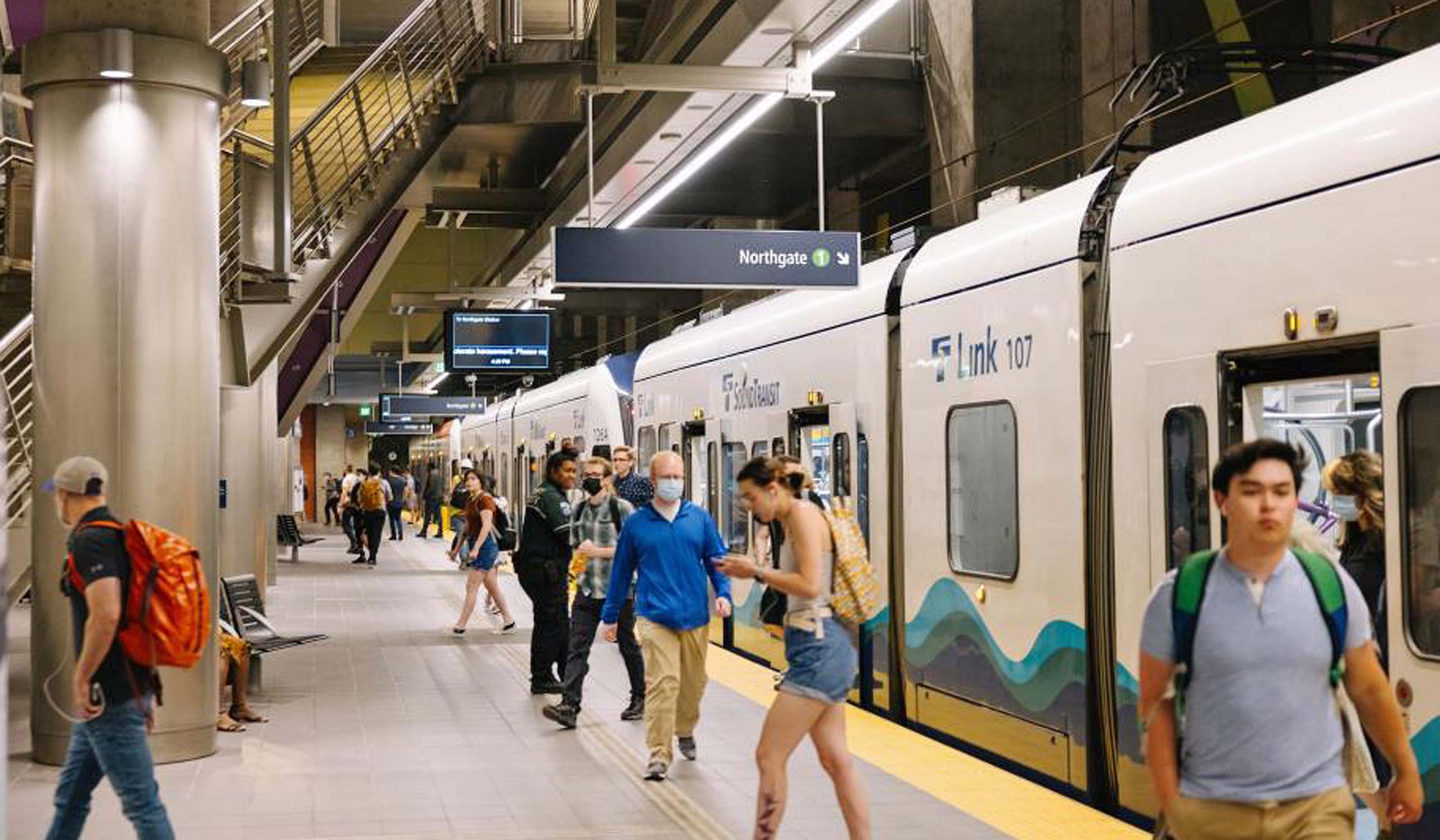On October 2, 2021, Sound Transit in the Puget Sound, Washington, began Link light rail service to three new stations on the 1 Line. These stations serve the University District, Roosevelt, and Northgate areas in Seattle. This project examined the changes in regional travel behavior that occurred as a result of those changes in transit service.
In October 2021, the three new stations ranked first (Northgate), second (U-District), and sixth (Roosevelt) in total farecard boardings among all Link stations. At the time they opened, Sound Transit, King County Metro (Metro), and Community Transit (CT) of Snohomish County restructured many of their routes that had previously provided express service to downtown Seattle and the University District. This combination of changes was designed both to maximize access to the new stations and also to remove duplicate bus service and reduce Metro and CT operational costs.
Provision of high quality access to Link light rail was intended to increase overall ridership through greater reliability of the Link service and, in many instances, faster travel times. The downside of the shift in route structure to focus on light rail was that many riders who used to have one-seat rides to their destinations in downtown Seattle and the University District had to transfer from bus to rail inbound and from rail to bus outbound. All three transit agencies were interested in how this change in the nature of transit service to these two major destinations changed ridership.
To determine travel behavior changes, the researchers analyzed data from boardings that used ORCA (One Regional Card for All) farecards. Comparisons were made primarily between September/October 2019 (the last pre-COVID-19 year) and September/October 2021.
Not surprisingly, with the new stations and route structure, riders changed where and how often they transferred from buses operating from the north. They took advantage of the three new stations (University District, Roosevelt, and Northgate) while decreasing their use of the existing University of Washington (UW) Stadium station.
A large drop in bus transfers to Link occurred at the UW Stadium station in October 2021. However, the sum of transfers that occurred at the four stations was more than twice the number of transfers that had occurred at the UW Stadium station during September 2021. Clearly, riders took advantage of transfer opportunities closer to their origin to board Link earlier in their trips, rather than riding all the way to the UW Stadium.
Some of the researchers’ findings are the following:
- The three new Link stations were heavily used.
- In general, the altered bus route structure was successful at attracting riders to Link, as transfer rates at all three new stations were high.
- In general, 15 to 20 percent of riders headed to downtown elected to switch to other routes that allowed them to maintain a one-seat ride rather than take revised bus routes and transfer to Link.
- Riders willing to transfer to Link often took advantage of multiple alternative routes to reach Link, rather than remaining on their previous route or selecting a single new route.
- A substantial number of previous bus riders appeared to drive to Link, at least occasionally, using both the Northgate and Roosevelt stations in this manner.
Understanding the changes in travel behavior that resulted from the 2021 service changes should assist planners in improving their modeling of the impacts of future light rail station openings.
Authors:
Mark E. Hallenbeck
Gabrielle Hager
Ryan Avery
Washington State Transportation Center, UW
Sponsor: Sound Transit

